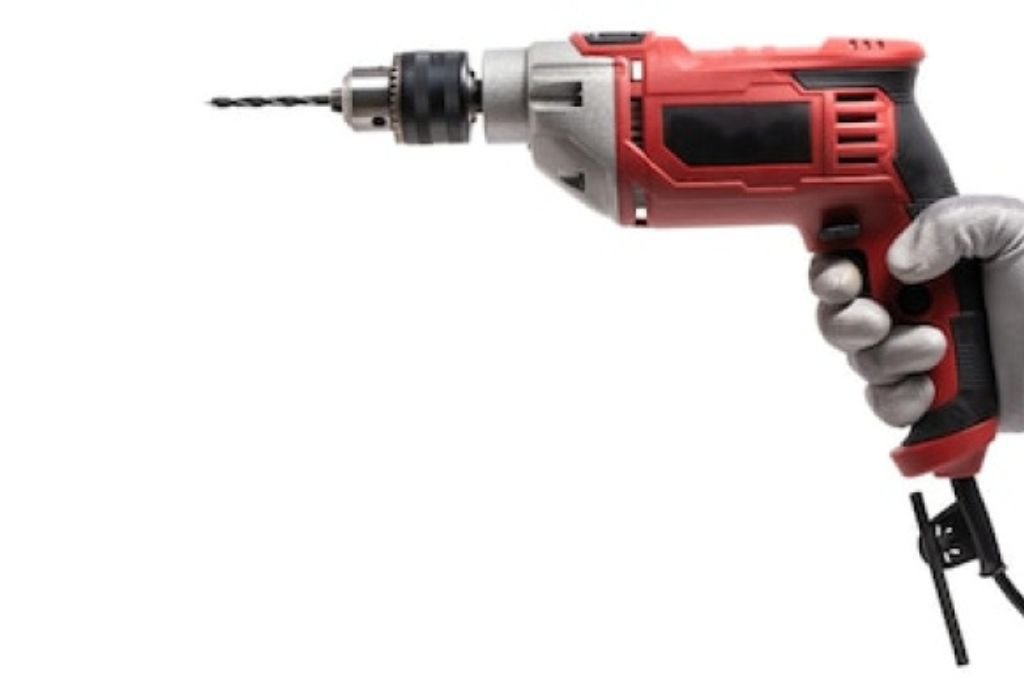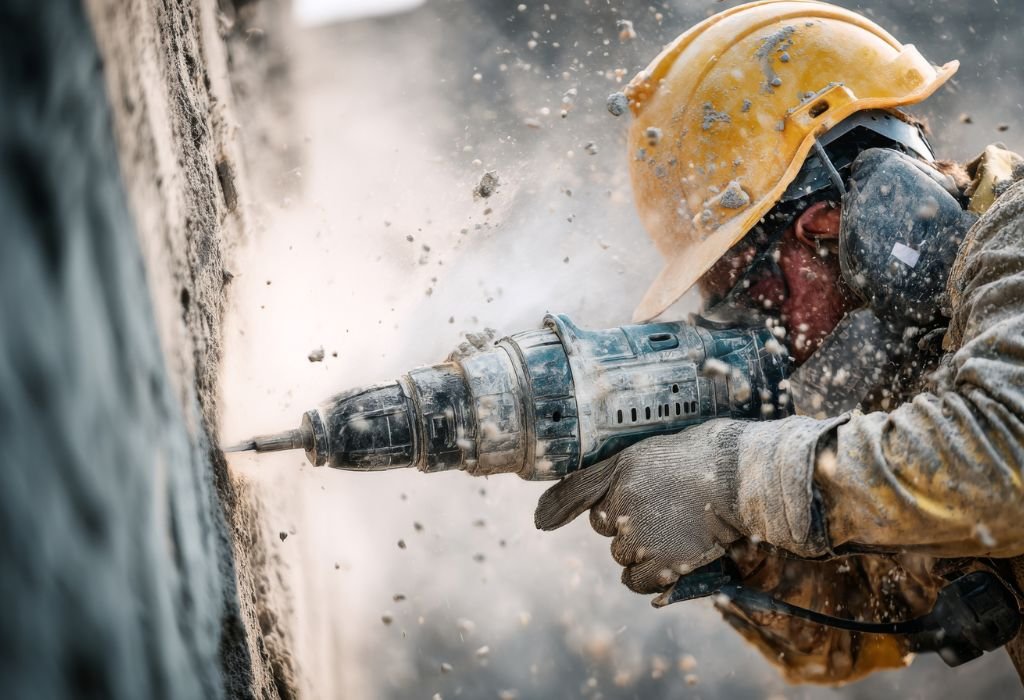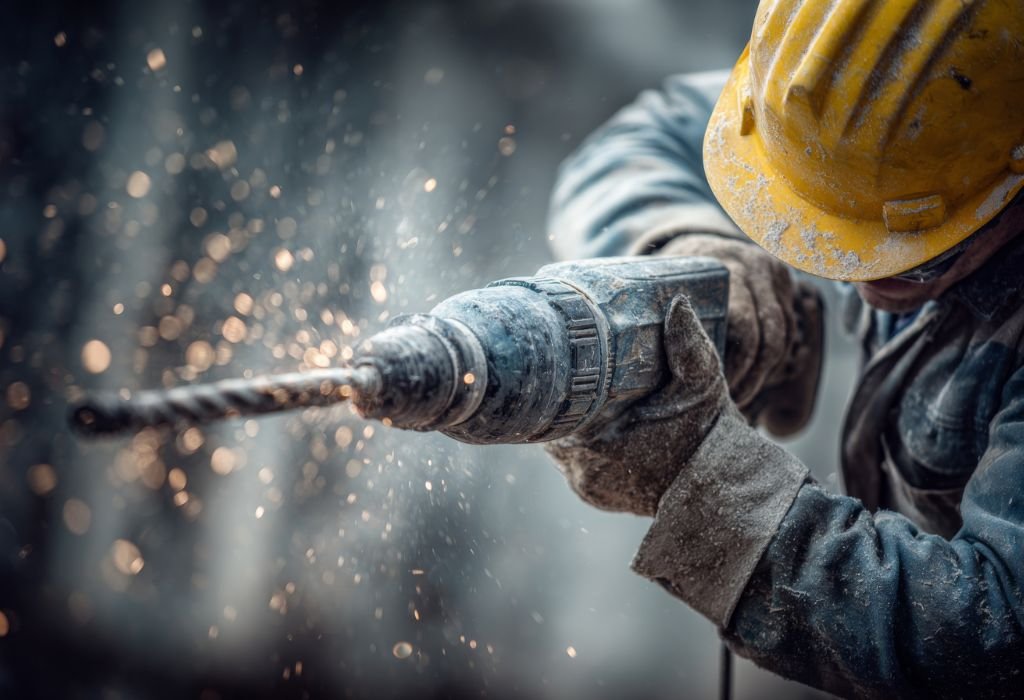Imagine standing in front of a concrete wall, drill in hand, only to find the bit barely scratching the surface. Hours pass, the motor overheats, and frustration sets in.
A rotary hammer drill is the tool designed for the jobs that ordinary drills cannot handle.
With a piston-driven hammering mechanism, it delivers powerful blows that pulverize concrete, stone, and brick while the drill bit rotates.
The U.S. home improvement industry surpassed $500 billion in 2023 (HIRI), with heavy-duty tools like rotary hammers driving the surge.
Globally, SDS technology continues to grow in demand as masonry drilling remains a core task (Statista).
What sets the rotary hammer apart is not just raw strength but versatility. With the right attachment, it can drill anchor holes, break up tile, or even chisel away plaster.
This guide explores what a rotary hammer drill is used for, how it works, its main advantages, and whether you need one for your projects.
What Is a Rotary Hammer Drill?

A rotary hammer drill is a power tool designed to combine rotation with strong hammering action. Unlike regular hammer drills, it uses a piston mechanism that delivers more impact energy.
These drills are primarily used for concrete, masonry, and stone projects. They often come with SDS chucks that allow for quick bit changes and better grip.
What makes a rotary hammer different from a hammer drill?
It uses a piston-driven mechanism instead of a mechanical clutch, providing more power.
Is it only for professionals?
No, many DIYers use it for home renovations involving concrete or stone.
Does it require special drill bits?
Yes, SDS or SDS-Plus bits are commonly used for compatibility and strength.
Can it replace a regular drill?
Not for lighter tasks, but it’s ideal for heavy-duty drilling.
Why is it called a rotary hammer?
Because it both rotates the bit and hammers simultaneously.
Key Uses of a Rotary Hammer Drill
The main use of a rotary hammer drill is drilling into hard materials. Its design makes it ideal for concrete, brick, and stone.
It is also widely used in demolition work, tile removal, and chiseling. With multiple modes, it adapts to drilling, hammer drilling, or chiseling.
What is a rotary hammer drill used for most commonly?
Drilling anchor holes in concrete and masonry.
Can it be used for demolition?
Yes, especially for removing tile, plaster, or breaking small concrete slabs.
Is it useful for home projects?
Yes, for basement finishing, patio installation, or heavy wall mounting.
Can it handle wood or metal?
It can, but a standard drill is better for those materials.
Does it save time?
Yes, it drills faster and more efficiently compared to standard hammer drills.
Drilling Into Concrete and Masonry
One of the main purposes of a rotary hammer drill is to handle concrete and masonry. Standard drills often fail to penetrate these materials.
Rotary hammers use their piston mechanism to chip away at dense surfaces while drilling. This makes tasks like anchor setting and rebar installation much easier.
Q&A Section
Why is concrete hard to drill?
Because it contains aggregates like stone and gravel that resist standard bits.
What type of bit is best?
SDS-Plus or SDS-Max carbide-tipped bits work best.
How deep can it drill?
It can reach depths of several inches depending on the model.
Do you need water for drilling?
In some cases, yes, to cool the bit and reduce dust.
Can it drill rebar?
Yes, with rebar-cutting bits designed for rotary hammers.
Demolition and Chiseling Applications
Rotary hammer drills are also used for light demolition. With a chisel attachment, they can break tiles, remove mortar, and chip concrete.
This makes them versatile for both construction and renovation projects. Many models feature a “chisel-only” mode for focused demolition work.
Can it replace a jackhammer?
For small jobs, yes, but not for heavy demolition.
What attachments are needed?
Chisel bits such as flat, pointed, or scaling chisels.
Is it good for tile removal?
Yes, it quickly removes ceramic and stone tiles.
Does it work on brick walls?
Yes, it can chip away old mortar or bricks.
Is vibration a problem?
Advanced models include anti-vibration systems for comfort.
Rotary Hammer vs. Hammer Drill

Although both are designed for tough materials, rotary hammers are much more powerful. A hammer drill uses a mechanical clutch, while rotary hammers use a piston.
This difference results in higher impact energy and faster drilling speed. Rotary hammers also allow chiseling, which hammer drills cannot do.
Which is better for concrete?
A rotary hammer, because it delivers higher impact force.
Is a hammer drill cheaper?
Yes, but it’s less effective on dense materials.
Can a hammer drill replace a rotary hammer?
Not for large projects, but okay for small holes in brick.
Do both use the same bits?
No, hammer drills use standard masonry bits, rotary hammers use SDS bits.
Which is easier to handle?
Hammer drills are lighter, but rotary hammers are designed for efficiency.
Rotary Hammer Drill Features
Modern rotary hammer drills come with features that improve usability. These include SDS chucks, variable speed controls, and anti-vibration systems.
Some also include multiple operation modes: drilling, hammer drilling, and chiseling. Cordless options are now available for portability.
What is an SDS chuck?
It allows quick bit changes and better grip on bits.
Are cordless rotary hammers powerful enough?
Yes, for medium-duty work, but corded models handle heavier jobs.
Do they have safety features?
Yes, including overload protection and vibration reduction.
Are they heavy?
Yes, typically heavier than hammer drills.
Can beginners use them?
Yes, with proper safety precautions.
Safety Tips for Using a Rotary Hammer Drill
Using a rotary hammer requires safety awareness. The tool generates dust, noise, and vibration.
Proper personal protective equipment (PPE) should always be worn. This includes safety glasses, ear protection, gloves, and a dust mask.
Is dust a concern?
Yes, especially silica dust from concrete, which is hazardous.
How can dust be reduced?
Using dust extractors or water cooling helps minimize it.
Are gloves necessary?
Yes, to reduce vibration impact and improve grip.
Do you need ear protection?
Yes, because rotary hammers are loud tools.
What safety risk is most common?
Kickback when the bit jams in concrete.
When Should You Use a Rotary Hammer Drill?
A rotary hammer should be used when working with hard materials. It is not necessary for light drilling tasks.
Projects like concrete slab drilling, wall mounting, or tile removal benefit most from it.
Should I use it for everyday tasks?
No, it’s best reserved for heavy-duty work.
When is it essential?
When working with concrete, stone, or brick.
Is it good for DIY home renovation?
Yes, if the project involves masonry or demolition.
Can professionals work without it?
Rarely, as it is standard equipment in construction.
Will it last long?
Yes, with proper maintenance and correct bit use.
Buying Guide for Rotary Hammer Drills

When buying a rotary hammer drill, consider the size, power, and bit compatibility. Models range from light-duty SDS-Plus to heavy-duty SDS-Max.
Also, decide between corded and cordless based on project type. Extra features like anti-vibration and dust collection improve comfort.
Which brand is best?
Bosch, DeWalt, Makita, and Hilti are top brands.
How much power is needed?
For home use, 2–4 joules impact energy is sufficient.
Are cordless drills reliable?
Yes, but check battery capacity before purchase.
What bits should be purchased?
SDS-Plus for light to medium, SDS-Max for heavy-duty.
Is price a factor?
Yes, but investing in quality ensures durability.
Conclusion
So, what is a rotary hammer drill used for? It is the go-to tool for drilling into concrete, breaking tile, and handling masonry work. Its piston-driven power makes it far more effective than hammer drills.
Whether you are a DIYer working on home projects or a contractor tackling construction, this tool saves time and effort. Investing in a rotary hammer ensures efficiency, durability, and professional-quality results.

I’m John F. Nicholas, the founder, lead writer, and drill enthusiast behind 101drill.com. With years of hands-on experience in power tools and DIY projects, I created this platform to share practical knowledge, expert tips, and real-world insights to help others master the art of drilling.
